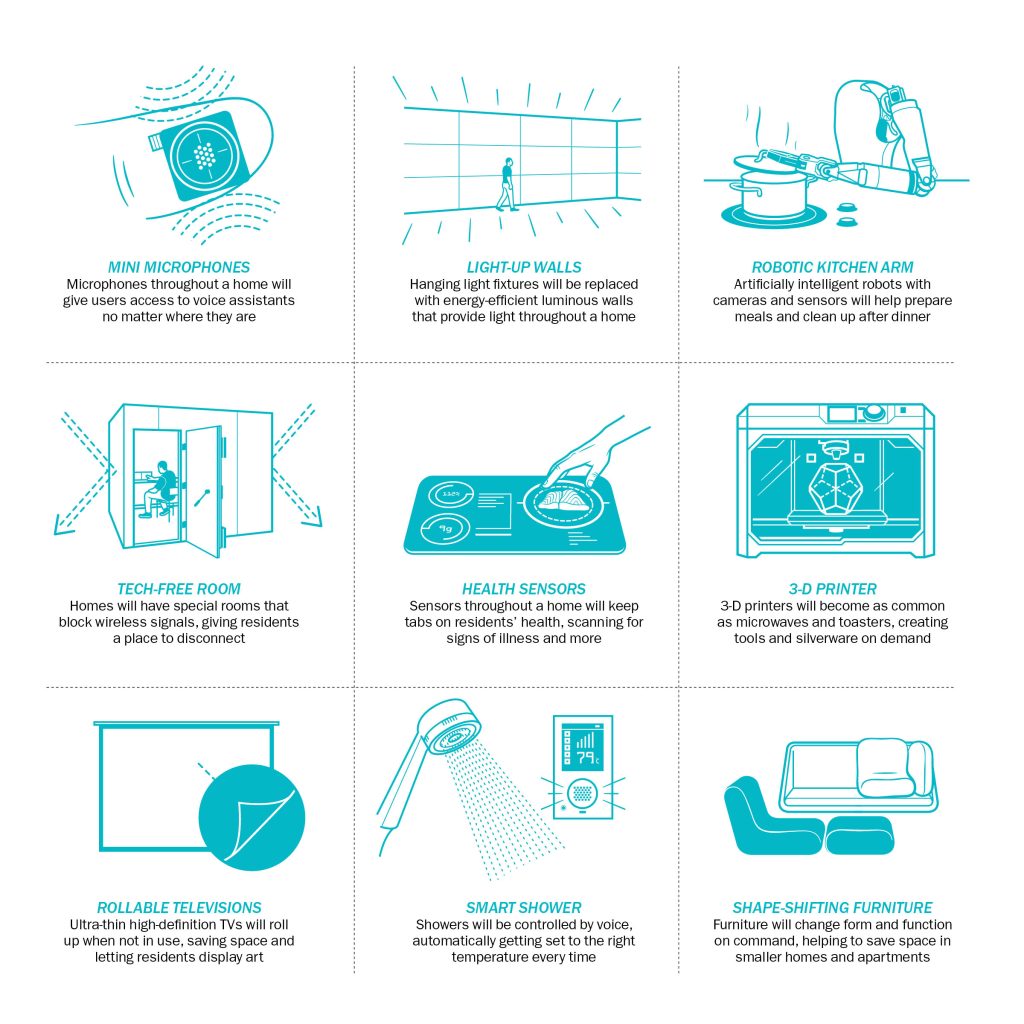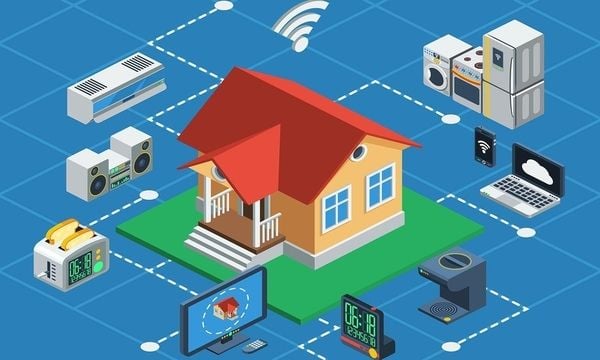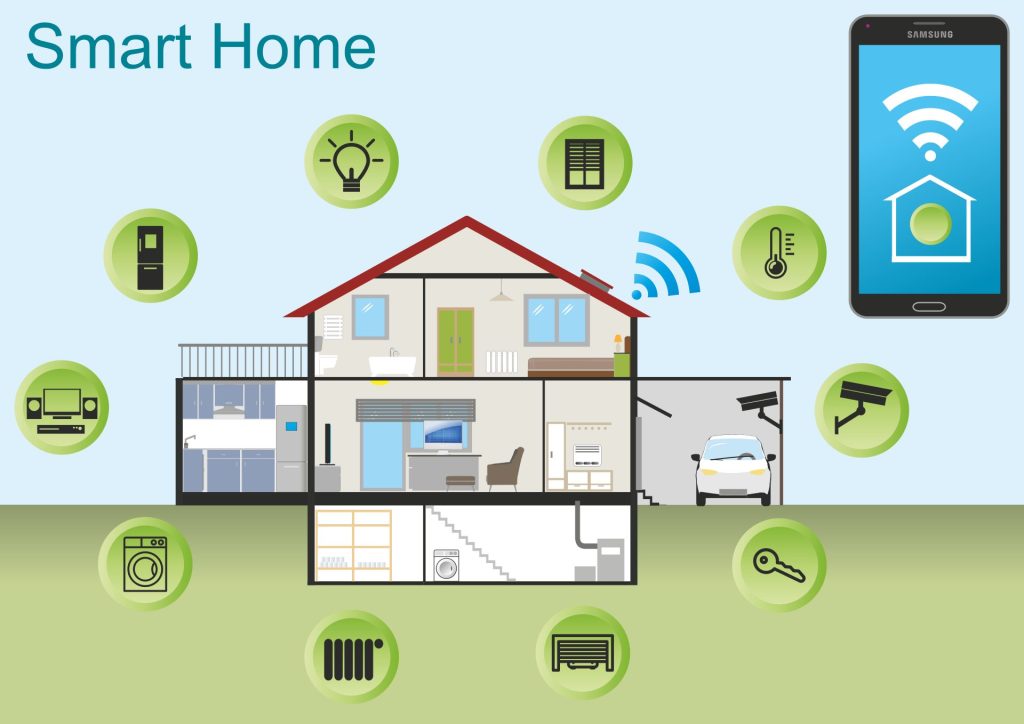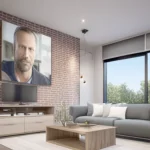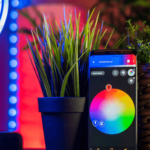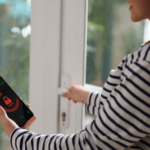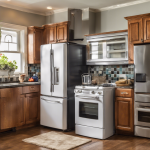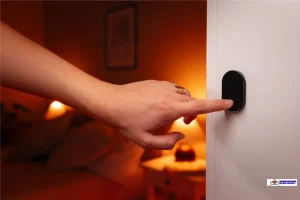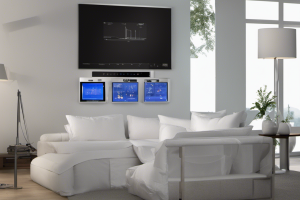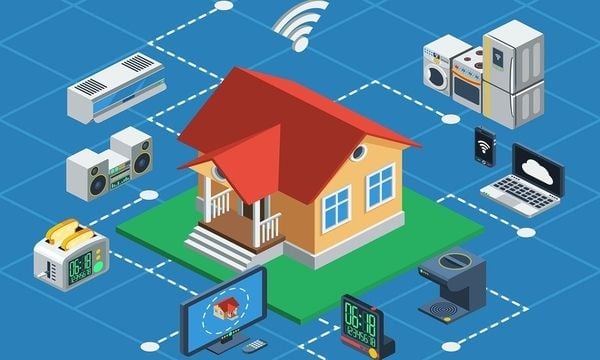
Can you imagine living in a home where everything is connected? Where can you control your lights, appliances, and security system with a button or a simple voice command? Well, that future is pretty close. With advancements in connectivity, home technology is rapidly evolving, making our lives more convenient and efficient than ever before. In this article, we will dive deeper into the topic of the future of home technology and explore the exciting advancements that are waiting just around the corner.
Picture this: you wake up in the morning, and as soon as your feet touch the floor, your home's smart system recognizes your presence and adjusts the temperature to your liking. As you go through the house, the lights automatically turn on and off, following your every move. These are just a few examples of how connectivity transforms our homes into smart living spaces. And the best part? This is just the beginning.
Shortly, advancements in connectivity will allow us to integrate our devices, appliances, and systems seamlessly. We will be able to control everything from our smartphones or through voice commands, creating a truly connected and personalized home experience. The possibilities are endless, from smart refrigerators that remind us of what groceries we need to buy to advanced security systems that can identify us by our voice.
So, get ready to embrace a future where your home is not just a place to live but a smart, intuitive companion that understands your needs and effortlessly adapts to your lifestyle. In the following article, we will explore the various areas where connectivity is impacting and how these advancements are shaping the future of home technology. Get ready to be amazed!
The Future of Home Technology: Advancements in Connectivity
Are you ready for the future of home technology and connectivity? With advancements in wireless connectivity, smart home automation, and the Internet of Things (IoT), our homes are becoming smarter and more connected. In this article, we will explore the latest home technology innovations and how they shape how we live.
Advancements in Wi-Fi Technology
Gone are the days of slow and unreliable internet connections. With the rapid advancements in Wi-Fi technology, we can now enjoy faster and more reliable internet speeds in our homes. Wi-Fi 6, the latest iteration of this wireless technology, significantly improves speed, capacity, and coverage.
Wi-Fi 6 is designed to handle the growing number of connected devices in our homes. With more and more devices connected to the internet, our networks need to handle the increased traffic. Wi-Fi 6 achieves this through features like orthogonal frequency division multiple access (OFDMA), which allows multiple devices to communicate simultaneously, and target wake time (TWT), which reduces power consumption for connected devices.
Integration of Bluetooth and Zigbee
In addition to Wi-Fi, integrating Bluetooth and Zigbee technologies adds another layer of connectivity to our homes. Bluetooth is commonly used for short-range connections between devices like smartphones and speakers. Zigbee, on the other hand, is a low-power wireless standard specifically designed for smart home devices.
We can create seamless connections between different devices and appliances by integrating Bluetooth and Zigbee into our homes. For example, with Bluetooth-enabled lights and Zigbee-enabled intelligent switches, you can control your home's lighting system through a smartphone app or voice commands.
Emerging 5G Networks
The arrival of 5G networks is set to revolutionize how we connect to the internet. 5G promises faster speeds, lower latency, and higher capacity to enjoy a more seamless and responsive online experience in our homes.
With 5G, we can expect better streaming quality for music and videos, smoother online gaming experiences, and faster downloads and uploads. 5G also enables new possibilities for smart home devices, such as streaming 4K videos directly to your smart TV or controlling your home security system through a smartphone app.
Smart Home Automation
Imagine a home where everything is connected and controlled with a simple voice command or a tap on your smartphone. With smart home automation, this vision is becoming a reality.
Integration of Voice Assistants
Voice assistants, such as Amazon Alexa and Google Assistant, have become increasingly popular recently. These devices use natural language processing and artificial intelligence to understand and execute voice commands. They can perform various tasks, from playing music and answering questions to controlling smart devices and appliances.
By integrating voice assistants into our homes, we can control our lights, thermostats, and even our home security systems with just our voice. Imagine waking up in the morning, saying, “Alexa, turn on the lights and start brewing coffee,” and having your home respond to your commands.
Seamless Integration of Devices
One of the critical advantages of intelligent home automation is the ability to integrate different devices and appliances seamlessly. With hubs or intelligent home automation systems, you can connect various devices, such as lights, thermostats, and security cameras, and control them from a single interface.
For example, you can set up routines that automatically turn off the lights, lock the doors, and lower the thermostat when you leave the house. Or you can create scenes that adjust the lighting and temperature to create the perfect ambiance for movie nights or dinner parties.
Artificial Intelligence in Home Automation
Artificial intelligence (AI) is increasingly important in home automation. AI-powered systems can learn your preferences and behaviors and adapt to your needs over time.
For example, an intelligent thermostat with AI capabilities can learn your daily routine and adjust the temperature accordingly. It can also consider weather conditions and occupancy to optimize energy usage and save money.
AI can also enhance home security by analyzing patterns and detecting anomalies. For instance, an AI-powered security camera can differentiate between a delivery person, a pet, or a potential intruder and send real-time alerts if something seems suspicious.
Internet of Things (IoT)
The Internet of Things (IoT) refers to the network of connected devices and appliances that can communicate and exchange data. The IoT is the backbone of innovative home technology, enabling us to control and monitor our homes remotely.
Connected Devices and Appliances
We can connect various devices and appliances in our homes with the IoT. From smart lights and thermostats to smart TVs and refrigerators, these devices can communicate with each other and with us through the Internet.
Connected devices and appliances offer a wealth of benefits. For example, a connected refrigerator can alert you when you're running low on groceries or suggest recipes based on the ingredients you have. A connected washing machine can notify you when your laundry is done or needs maintenance.
Smart Energy Management Systems
One of the key advantages of the IoT is its potential to manage and optimize energy usage in our homes. Smart energy management systems can monitor your energy consumption in real-time and provide insights and recommendations on reducing energy usage and lowering your bills.
For example, a smart thermostat can learn your temperature preferences and adjust the heating and cooling accordingly. It can also detect when you're away from home and automatically adjust the temperature to save energy.
Security and Privacy Concerns
While the IoT offers many benefits, it also raises concerns about security and privacy. With more devices connected to the internet, the potential for security breaches and data leaks increases.
To address these concerns, choosing devices and systems prioritizing security is essential. Look for devices with encryption to protect your data and built-in security features, such as two-factor authentication.
Keeping your devices and software updated with the latest security patches is also essential. Regularly change your passwords and avoid using default or shared passwords. Finally, be mindful of the data you share with your devices and only provide the necessary information.
Enhanced Entertainment Systems
Home entertainment systems have come a long way from traditional TVs and stereos. With technological advancements, we can now enjoy a more immersive and interactive entertainment experience in our homes.
Integration of Streaming Services
Thanks to streaming services like Netflix, Hulu, and Amazon Prime Video, we can access a vast library of movies, TV shows, and documentaries at our fingertips. Gone are the days of physical media and limited content choices.
By integrating streaming services into our home entertainment systems, we can enjoy our favorite shows and movies on the big screen with high-quality video and audio. Smart TVs and media players make navigating through different streaming apps easy and finding the content we want to watch.
Immersive Audio-Visual Technologies
The advancement of audio-visual technologies has transformed the way we experience movies, music, and games at home. High-definition (HD) and 4K displays offer stunning visuals with vibrant colors and sharp details. Dolby Atmos and DTS:X technologies provide immersive 3D sound that envelops you in action.
For the ultimate home theater experience, you can invest in technologies like OLED displays, HDR (High Dynamic Range), and home theater sound systems. These technologies bring the cinema experience to your living room, allowing you to enjoy movies and games with stunning visuals and immersive sound.
Virtual Reality and Augmented Reality Experiences
Virtual reality (VR) and augmented reality (AR) are opening up new possibilities for home entertainment. VR headsets, like the Oculus Quest and HTC Vive, transport you to virtual worlds where you can play games, watch movies, and explore immersive experiences.
AR, on the other hand, overlays digital information in the real world. For example, you can use AR to see how furniture would look in your living room before purchasing or to play interactive games that incorporate your physical environment.
We can expect more innovative and immersive home experiences as VR and AR technologies evolve.
Energy Efficiency Solutions
As we become more conscious of our environmental impact, energy efficiency solutions are becoming increasingly important. We can reduce our energy consumption and live more sustainably with smart technologies and innovative products.
Smart Thermostats and Energy Monitoring
Smart thermostats are a great way to optimize your home's heating and cooling and reduce energy usage. These devices can learn your preferences and adjust the temperature accordingly, saving you money on your energy bills.
Energy monitoring systems can provide real-time insights into your energy consumption. They can show you which appliances and devices are using the most energy, allowing you to make informed decisions and take steps to reduce your usage.
Solar Power Integration
Solar power is a renewable and sustainable energy source that can significantly reduce your reliance on the grid. Installing solar panels on your roof can generate electricity and lower your energy bills.
With the integration of smart technologies, you can monitor your solar power production and optimize your energy usage. For example, during peak solar production times, you can schedule high-energy-consuming activities, such as running the dishwasher or doing laundry.
Efficient Lighting Solutions
Lighting accounts for a significant portion of our energy consumption. You can reduce your energy usage and save money by replacing traditional incandescent bulbs with energy-efficient LED bulbs.
Smart lighting systems take energy efficiency a step further by allowing you to control your lights remotely and automate lighting schedules. You can set your lights to automatically turn off when you leave a room or adjust the brightness based on natural light conditions.
Home Security and Surveillance
Home security is a top priority for many homeowners. With technological advancements, we now access a wide range of smart security solutions offering enhanced protection and peace of mind.
Smart Locks and Video Doorbells
Gone are the days of traditional locks and peepholes. Smart locks and video doorbells provide convenience and increased security. With smart locks, you can unlock your doors remotely, provide temporary access to visitors, and receive real-time notifications when someone enters or exits your home.
Video doorbells allow you to see and communicate with visitors at your front door, even when you're not at home. They provide a live video feed to your smartphone or tablet, allowing you to monitor your doorstep and deter potential intruders.
Real-time Monitoring and Alerts
Smart security systems offer real-time monitoring and alerts, so you can stay connected to your home even when you're away. These systems use a combination of sensors, cameras, and alarms to detect and deter potential threats.
If a sensor detects motion or a door or window opening, you will receive a notification on your smartphone. You can then access live video feeds to see what's happening and take appropriate action. Some systems also allow you to contact emergency services directly from the app.
Advanced Facial Recognition Technology
Facial recognition technology is becoming increasingly common in smart security systems. This technology allows your home to recognize and identify individuals, providing security and convenience.
For example, you can set up your security system to only notify you when an unrecognized face is detected, reducing false alarms. You can also use facial recognition to unlock doors or customize settings based on individual preferences.
Health and Wellness Innovation
Our homes play a crucial role in our overall health and well-being. With technological advancements, we can create personalized home environments that promote wellness and support healthy lifestyles.
Smart Health Monitoring Devices
Smart health monitoring devices like fitness trackers, smart scales, and blood pressure monitors allow us to track and monitor our health and fitness goals. These devices provide valuable insights into our physical well-being and motivate us to make positive changes.
Integrating health monitoring devices into our homes allows us to create personalized wellness programs and receive real-time feedback and guidance. For example, a smart scale can track your weight, body fat percentage, and BMI (body mass index) and provide personalized recommendations to help you achieve your goals.
Integrated Fitness and Wellness Apps
Fitness and wellness apps have become increasingly popular in recent years. These apps offer many features, from workout tracking and meal planning to meditation and sleep tracking.
By integrating fitness and wellness apps into our homes, we can create a seamless and personalized experience. For example, you can connect your fitness tracker to your smart TV and follow along with workout videos on the big screen. Or you can use your voice assistant to play guided meditation or ambient sounds to help you relax and unwind.
Personalized Home Environments for Well-being
Our surroundings have a significant impact on our well-being. With smart home technology, we can create personalized environments that promote relaxation, focus, and productivity.
For example, smart lighting systems can adjust the color and intensity of the lights based on the time of day or your activities. Cooler, brighter lights in the morning can help you wake up and feel alert, while warmer, dimmer lights in the evening can promote relaxation and better sleep.
Smart speakers can also play soothing sounds like rain or ocean waves to create a calm and peaceful atmosphere. You can even set up routines that automate these environmental changes based on your daily schedule or personal preferences.
Enhanced Home Connectivity Infrastructure
To support the growing demand for connected devices and smart home technology, it's essential to have a robust and reliable home connectivity infrastructure.
Fiber Optic Networks
Fiber optic networks provide high-speed and reliable internet connections. Unlike traditional copper cables, which transmit data through electrical signals, fiber optic cables use light pulses to carry data. This results in significantly faster speeds and better reliability.
Connecting your home to a fiber optic network lets you enjoy high-speed internet for streaming, gaming, and downloading large files. Fiber optic networks also have low latency, essential for real-time applications like online gaming and video calls.
Mesh Networks for Seamless Coverage
A mesh network is a wireless network that consists of multiple devices, called nodes, placed throughout your home. These nodes communicate with each other to provide seamless coverage and eliminate dead zones.
By setting up a mesh network in your home, you can ensure that all your devices have a strong and stable connection, no matter where they are. Mesh networks are handy in larger homes or homes with multiple floors, where a single router may need to provide more coverage.
Integration with Smart City Initiatives
As smart home technology becomes more prevalent, it's important to consider its integration with smart city initiatives. Smart city initiatives aim to create more sustainable, efficient, and livable cities through technology.
We can benefit from a more interconnected and intelligent infrastructure by aligning with smart city initiatives. For example, energy management systems can optimize energy usage based on the overall energy demand in the city. Traffic management systems can provide real-time updates on road conditions and suggest alternative routes to reduce congestion.
Advanced Home Appliances
Home appliances are becoming smarter, more efficient, and more connected. These innovations transform how we approach household chores, from internet-enabled appliances to smart refrigerators and cooking systems.
Internet-Enabled Appliances
Internet-enabled appliances, also known as smart appliances, offer a range of features and capabilities that go beyond their traditional counterparts. These appliances can be controlled and monitored remotely through a smartphone app or voice commands.
For example, a smart oven can preheat itself based on a recipe you select on your smartphone. A smart washing machine can notify you when your laundry is done or when to order more detergent. A smart dishwasher can optimize its water usage based on the number of dishes and how dirty they are.
Smart Refrigerators and Cooking Systems
Smart refrigerators and cooking systems are revolutionizing how we store and prepare food. These appliances offer features like inventory management, recipe suggestions, and energy-saving modes.
For example, a smart refrigerator can take inventory of its contents and send notifications when you're running low on certain items. It can also suggest recipes based on your ingredients and provide cooking instructions on its display.
Smart cooking systems, such as induction cooktops and sous vide machines, offer precise temperature control and cooking timers. They can help you achieve better cooking results and save energy by avoiding overcooking or undercooking.
Smart Laundry Solutions
Doing laundry is time-consuming, but smart laundry solutions aim to streamline the process and make it more convenient. From smart washing machines to smart dryers, these appliances offer a range of features that make laundry day a breeze.
Smart washing machines can automatically adjust their wash cycles based on the type of fabric and the amount of laundry. They can also send you notifications when the cycle is complete or when it's time to clean the filter.
Smart dryers offer features like moisture sensors that detect when the clothes are dry and automatically shut off to save energy. Some models even have steam features to remove wrinkles and freshen up clothes without ironing.
Conclusion
The future of home technology is bright, with advancements in wireless connectivity, smart home automation, the Internet of Things, and more. These advancements are making our homes more connected and convenient and energy-efficient, secure, and healthy.
We have the tools and technologies to create personalized and intelligent home environments, from Wi-Fi 6 and Bluetooth integration to voice assistants and AI-powered home automation.
As we continue to embrace these advancements, it's important to prioritize security and privacy. By choosing devices and systems that prioritize security and being mindful of the data we share, we can enjoy the benefits of technology without compromising our privacy and well-being.
So, get ready for the future of home technology and connectivity. Embrace the possibilities and make your home smarter, more connected, and more comfortable. With advancements in automation and innovation, the way we interact with our living spaces is evolving rapidly. From energy-efficient devices to AI-powered assistants, home gadgets for better living are transforming daily routines into seamless experiences. By integrating these innovations, you can create a personalized environment that enhances convenience, security, and overall well-being.

James Smith is our editor. He is an accomplished and versatile news writer with over a decade of experience covering a wide range of topics, including politics, business, and real estate. Throughout his career, James has been dedicated to uncovering the truth and presenting unbiased, factual reporting to his audience.



